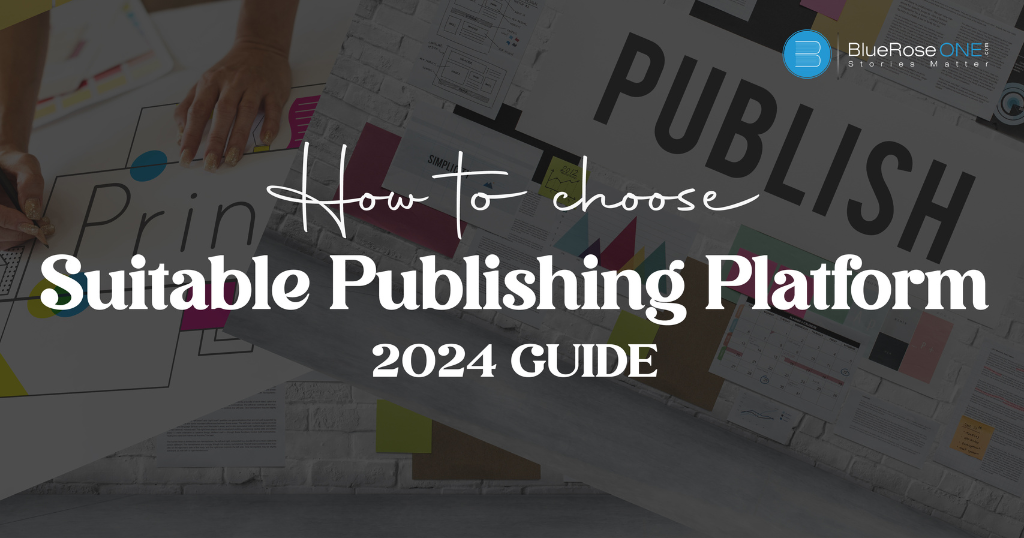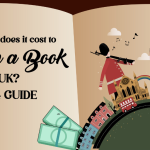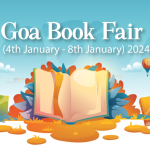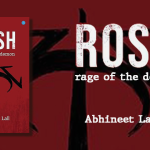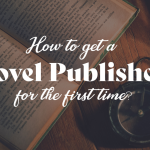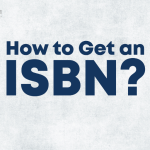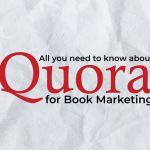The decision to publish a book is an exciting adventure, and with the development of self-publishing, authors today have more control and freedom over their work than ever before. However, with so many book publishing platforms available, it might be difficult to pick the one that best suits your needs and interests.
In this blog, we will look at the two publishing standards that are now in use and discuss what will work best for you, as well as their advantages and disadvantages.
Majorly there are 2 ways to publish a book in 2024, choose yours now:
What is Traditional Publishing?
Traditional publishing refers to the conventional method of publishing books, where authors submit their manuscripts to established publishing houses, literary agents, or publishing companies, which, if interested, undertake the responsibility of producing, distributing, and marketing the book. This process involves multiple steps and typically follows a set industry protocol.
- Submission of Manuscript: Authors submit their completed manuscripts or book proposals to literary agents or directly to publishing houses.
- Literary Agent Representation: Many authors choose to seek representation from literary agents, who act as intermediaries between authors and publishers. Agents help authors refine their manuscripts, negotiate contracts, and navigate the publishing industry.
- Publisher’s Editorial Process: Once a publishing house expresses interest in a manuscript, an editor works with the author to refine and edit the content. This process may involve multiple rounds of editing to ensure the manuscript meets publishing standards.
- Contract Negotiation: After the editorial process, the literary agent negotiates a publishing contract on behalf of the author. This contract outlines the terms of publication, royalties, rights, and other crucial details.
- Book Design and Production: Publishers take charge of designing the book cover, formatting the interior, and deciding on other production aspects. This process aims to create a marketable and appealing physical product.
- Distribution: Traditional publishers have established distribution channels that allow books to reach a wide range of bookstores, libraries, and online retailers. This includes both physical copies and, more recently, digital formats.
- Marketing and Promotion: Publishers invest in marketing and promotional efforts to generate awareness and interest in the book. This may involve book tours, media appearances, advertising, and other strategies.
- Sales and Royalties: Traditional publishers handle book sales, and authors receive royalties based on the sales of their books. Royalty rates vary and are typically outlined in the publishing contract.
- Longer Production Timeline: Traditional publishing often involves a longer timeline, from manuscript submission to book release. This is due to the thorough editorial process, production schedule, and coordination with the book market.
- Prestige and Credibility: Being published by a reputable publishing house is often associated with prestige and credibility in the literary world. Traditional publishing is still considered by many as a validation of an author’s work.

Pros of Traditional Publishing:
- Expertise and Resources: Traditional publishers bring extensive industry expertise, professional editing, and access to skilled designers and marketers. This can elevate the overall quality of the book.
- Distribution Channels: Traditional publishers have established distribution networks, ensuring a wider reach for the book in bookstores, libraries, and online retailers.
- Credibility: Books published traditionally often carry a certain level of credibility, as they have passed through a rigorous selection process.
Cons of Traditional Publishing:
- Lengthy Process: The traditional publishing process can be time-consuming, involving multiple rounds of submissions, revisions, and negotiations. It may take years before a book hits the market.
- Less Control: Authors have limited control over the creative and marketing aspects of their work. Decisions regarding cover design, pricing, and marketing strategies are often made by the publisher.
- Royalties and Advances: While traditional publishers offer advances, the royalty percentages authors receive per sale are generally lower compared to self-publishing.
While traditional publishing offers several advantages, such as the expertise of industry professionals, wider distribution, and credibility, it also comes with challenges, including a more extended timeline, potential rejection, and less control for the author over certain aspects of the publishing process.
Self-publishing has emerged as a viable alternative, allowing authors to retain more control and take advantage of digital platforms to reach their audience directly.
What is Self-Publishing?
Self-publishing is a method of publishing where authors take on the responsibilities of producing, distributing, and marketing their books independently, without the involvement of traditional publishing houses or literary agents.
In a self-publishing model, authors have greater control over the entire publishing process, from manuscript preparation to book promotion. This approach has become increasingly popular, especially with the rise of digital platforms and online distribution channels.
Here are key aspects of self-publishing:
- Author Control: One of the primary advantages of self-publishing is that authors retain full control over their work. They make decisions about the book cover, interior layout, content, pricing, and release schedule.
- Direct Publishing Platforms: Authors can use various online platforms to publish their books directly. Prominent platforms include Amazon Kindle Direct Publishing (KDP), Apple Books, Barnes & Noble Press, and others. These platforms often provide step-by-step guides for authors to publish both e-books and print books.
- Digital and Print Formats: Self-publishing allows authors to release their works in various formats, including e-books, paperbacks, and hardcover editions. Print-on-demand services enable the printing of physical copies as orders are placed, eliminating the need for large upfront printing costs.
- Costs and Royalties: Authors bear the costs associated with editing, cover design, and marketing. However, self-publishing platforms usually don’t charge upfront fees for publishing. Authors earn royalties on each copy sold, and these rates can be more favourable compared to traditional publishing.
- Speed to Market: Self-publishing offers a quicker route to market compared to traditional publishing. Authors can release their books promptly, responding to market trends or current events.
- Global Reach: Digital platforms provide global distribution, allowing authors to reach a vast audience around the world. E-books, in particular, can be easily purchased and downloaded internationally.
- Marketing and Promotion: While self-published authors have control over marketing strategies, they also bear the responsibility of promoting their work. Successful self-publishing often involves utilising social media, author websites, book reviews, and other promotional efforts.
- Adaptability: Authors can adapt and make changes to their books easily in response to reader feedback or evolving market demands. This flexibility is especially valuable in the dynamic publishing landscape.
- Learning Curve: Self-publishing requires authors to learn various aspects of the publishing process, including formatting, cover design, and marketing. While this may be a challenge initially, many resources and communities exist to support self-published authors.
- Quality Concerns: Critics of self-publishing often cite concerns about the potential lack of professional editing and design. However, many self-published authors invest in professional services to ensure the quality of their work.

Pros of Self-Publishing:
- Control Over the Creative Process: Authors retain full creative control over their work, from cover design to formatting, allowing for a personalised representation of their vision.
- Faster Time-to-Market: Self-publishing enables a quicker route to market. Authors can release their books on platforms within days, reaching readers more expeditiously than traditional publishing.
- Higher Royalties: Authors earn a higher percentage of royalties per sale in self-publishing. This can result in higher overall earnings, especially for successful books.
Cons of Self-Publishing:
- Marketing Responsibility: Authors bear the primary responsibility for marketing their books. Successful self-publishing often requires a robust marketing strategy to reach a broad audience.
- Perceived Lack of Credibility: Some readers may associate self-published books with lower quality. While this perception is changing, traditional publishing still carries a certain level of prestige for some readers.
- Distribution Challenges: While platforms like Amazon KDP offer wide distribution, reaching physical bookstores and libraries can be challenging without the established networks of traditional publishers.
Self-publishing has empowered many authors to bring their stories to readers, offering a viable alternative to traditional publishing. The choice between traditional and self-publishing depends on an author’s goals, preferences, and the specific requirements of their project.
New Wave of Self Publishing
Here’s a list of new wave of self-publishing in 2024:
- Digital Platforms as Publishing Allies
- Creative Autonomy and Diverse Voices
- Hybrid Publishing Models
- Direct Reader Engagement
- Rise of Self-Publishing Success Stories
- Collaborative Publishing Platforms
- Technological Advancements
- Data-Driven Decision-Making
- Digital Platforms as Publishing Allies:
The rise of user-friendly digital publishing services, such as Amazon Kindle Direct Publishing (KDP), Smashwords, and Draft2Digital, has democratised the publishing industry. These platforms give writers with the tools and resources they need to self-publish and distribute their work abroad. The simplicity of usage, along with direct access to users, has spurred the rise in self-published material. - Creative Autonomy and Diverse Voices:
One of the distinguishing elements of the current wave of self-publishing is the inclusion of various viewpoints. Authors from a variety of backgrounds, ethnicities, and experiences may now tell their stories without the usual gatekeeping restrictions. This transformation has resulted in a more inclusive literary environment, improving the reading experience with a diverse range of viewpoints. - Hybrid Publishing Models:
A hybrid approach to publishing has gained popularity, allowing authors to blend elements of traditional and self-publishing. Some authors choose to self-publish certain works while pursuing traditional avenues for others. This flexibility enables authors to tailor their publishing strategy to the unique requirements of each project. - Direct Reader Engagement:
Authors in the new wave of self-publishing are leveraging social media, author websites, and email newsletters to establish direct connections with their readers. By building a community around their work, authors can receive immediate feedback, engage in discussions, and cultivate a loyal readership. - Rise of Self-Publishing Success Stories:
The new wave has witnessed a surge in self-published authors achieving significant success. Bestselling books, critical acclaim, and lucrative deals with traditional publishers have become attainable milestones for self-published authors. These success stories challenge the stigma that was once associated with self-publishing. - Collaborative Publishing Platforms:
Collaborative platforms and author collectives have emerged, allowing writers to pool resources, share insights, and collectively market their works. This collaborative spirit fosters a sense of community among self-published authors, providing mutual support and increasing the visibility of their books. - Technological Advancements:
Technology has played a crucial role in enhancing the quality of self-published works. Authors can access professional editing services, high-quality cover designs, and advanced formatting tools, ensuring that their books meet industry standards. This has contributed to a significant improvement in the overall professionalism of self-published content. - Data-Driven Decision-Making:
The digital nature of self-publishing allows authors to gather and analyse data on reader preferences, buying patterns, and engagement metrics. Armed with this information, authors can make informed decisions about marketing strategies, book pricing, and content creation, maximising their chances of success.
Read: What Is Biblical Fiction? Complete Guide For New coming Authors
The decision between traditional publishing and self-publishing is based on an author’s aims, interests, and the nature of their work. Traditional publication provides reputation and access to industry experts, but it is a longer process with less control.
Self-publishing, on the other hand, allows writers to have more control and a faster time-to-market, but it also forces them to take on additional obligations, notably marketing. Before choosing on a publication option, authors should carefully evaluate these elements as well as the specific needs of their piece.
Choosing the right book publishing platform is a crucial decision that significantly impacts your book’s success. Whether you opt for the extensive reach of Amazon Kindle Direct Publishing, the broad distribution network of Smashwords and Draft2Digital, or the print book options provided by Lulu and IngramSpark, each platform has its own unique features and advantages.
Ultimately, the best platform for you depends on your specific goals, preferences, and the type of book you’re publishing. Consider factors such as distribution reach, royalties, formatting assistance, and additional services provided by each platform. Take your time to research and explore different options, and remember that the journey of publishing your book should align with your vision as an author.
Publish your book with BlueRoseONE and become a bestselling author. Don’t let your dream of becoming an author fade away, grab the opportunity now and publish your book – be it fiction, non fiction, poetry or more.
Happy publishing!

